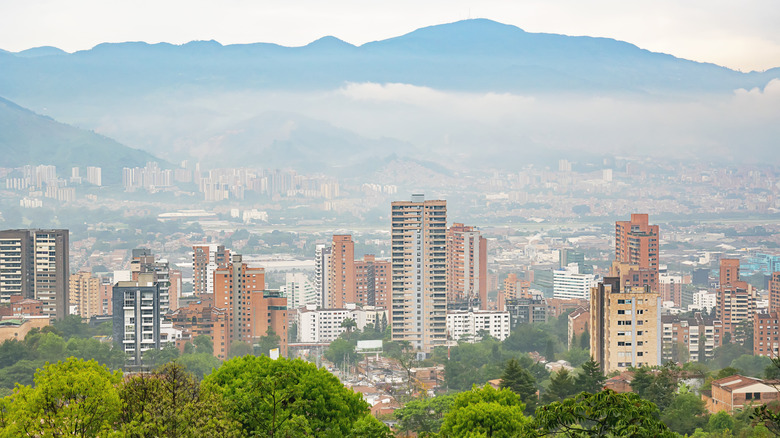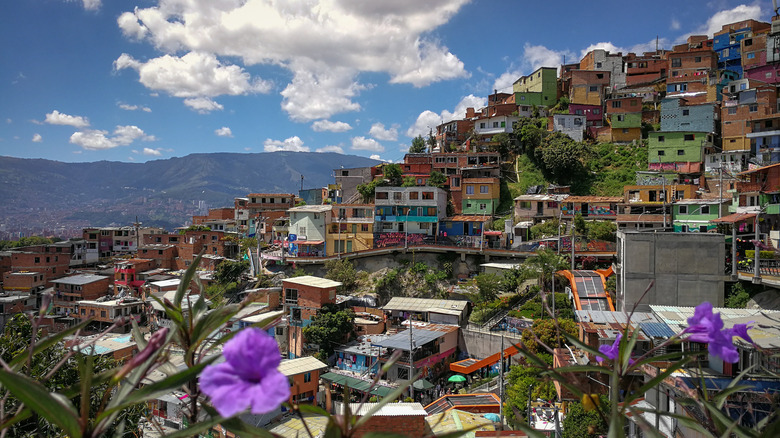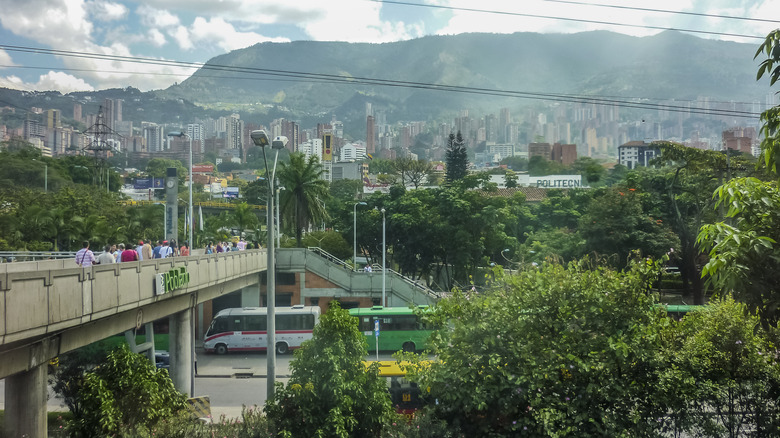South America's 'City Of Eternal Spring' Is A Tropical Oasis Of Green With A Dangerous Past
Some 30 years ago, Medellín was dubbed the world's 'Murder Capital,' because an average of 16 people were killed every day in the city in 1991. Infamous narco-trafficker Pablo Escobar and his Medellín cartel waged war against their own government, while communist guerrillas fought for territory against the far-right paramilitaries, both readily placing innocent civilians in their path. The military battled alongside extremists and policemen, judges, and lawyers were murdered with impunity.
Traveling to the advanced, modern, and artistic city today, it's hard to believe it was a no-go zone for tourists in the recent past. Its homicide rate has dropped by 95% and poverty rates have plummeted alongside. The city's commitment to transformation and improving the lives of its residents through infrastructure innovation has earned it prestigious global awards, ultimately leading to it being named "The Most Innovative City of the World" (via the BBC).
With this rise in prosperity, Medellín is clearly flourishing from its tourism appeal. It has one of the world's best nightlife scenes, architecture adorned with tumbling tropical plants, and some of Colombia's liveliest and most affordable neighborhoods, all contributing to its being one of South America's most desirable destinations.
How Medellín has left violence in its past
Typically, in Latin America, the higher up the hill your house is, the poorer you are. The jobs are in the center of the city, the infrastructure, all several hundred steps away. Comuna 13 is no exception, a once desperately impoverished and battle-ravaged barrio climbing up Medellín's west. It also had the misfortune to be situated on a strategically important hill. The boundary between the city and the Choco, the dense jungle concealing smuggling routes and drug farms, the hill passage was fought for fiercely by vying militias.
Walking through its vibrant, mural-lined lanes now, it's hard to imagine the full-blown war zone and exorbitant homicide rates from which thousands fled only decades ago. Visit with a local guide to learn about the institution of cable cars and outdoor escalators transformed day-to-day life in the hills, and how Comuna 13 has recovered the culture violence once robbed it of. Though one of the best exemplifications of the city's transformation, Comuna 13 has become something of a tourist trap. If you're feeling bold enough to venture into the neighborhoods that have yet to fully finish their recovery, travel with a local to Barrio 4.
When wandering the ornate art galleries, taking the cable car to the sprawling tropical parks in the hills, or visiting the museum dedicated to the city's memory, you'll have constant reminders of where you are. Modern Medellín doesn't exist without its past, but its long-since defined by it.
The best areas to eat, sleep, and drink in Medellín
Almost every street in the wealthy neighborhood of El Poblado is encroached upon by tropical flora, so you won't have to voyage to Colombia's islands for a sample of the immense natural beauty. The nightlife hub of Medellín is loud and busy, yet you'll find tight urban laneways running alongside crashing waterfalls and elusive stairways hidden by hanging avocado trees. If you're basing in the heart of the action in El Poblado, stay in Manila to avoid the almost 24/7 ruckus found further up the hill. Sleep at Nomada Hotel Origen to get first dibs on the quickly filled seats at Hija Mia, a coffee shop with one of the best brunch offerings in Medellín. While in the area, dine on elevated Colombian delicacies at Gabo or pair birria tacos with icy margaritas at El Alter.
Once night sets, head further up the hill for a night cap or to warm up for a big night. Avoid Parque Lleras, a square favored by unwitting first timers but frequented by some of the city's seedier crowd, and instead walk uphill a few blocks to Provenza. Pull up a plastic chair and order a cold Club Colombia amid the anticipative party crowds outside El Social Tienda Mixta desde 1969 or sequester with a jug of sangria in Burdo's leafy back patio.
To dodge the worst of the tourist crowds base yourself in Laureles instead. Salsa dance down Calle 70 or try a bandeja paisa at La Tienda de la 70 for a truly local experience.


